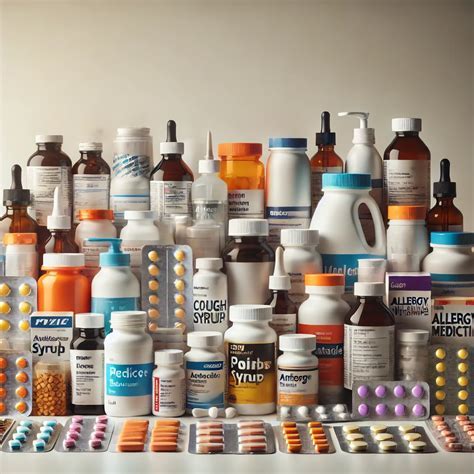Intro
Discover effective ringworm rash treatment options, including antifungal creams, oral medications, and home remedies, to help soothe itchy skin and promote healing from fungal infections and ringworm symptoms.
Ringworm rash is a common fungal infection that affects the skin, causing a red, itchy, and circular rash. It is highly contagious and can be spread through skin-to-skin contact, contaminated objects, or infected animals. The good news is that ringworm rash is treatable, and with the right treatment, the infection can be cleared up quickly. In this article, we will explore five ways to treat ringworm rash, including home remedies, over-the-counter medications, and prescription treatments.
The importance of treating ringworm rash cannot be overstated. If left untreated, the infection can spread to other parts of the body, causing more severe symptoms and potentially leading to complications such as skin infections, hair loss, and nail problems. Furthermore, ringworm rash can be a significant source of discomfort and embarrassment, affecting a person's quality of life and self-esteem. By understanding the different treatment options available, individuals can take control of their condition and get back to living a healthy and happy life.
Ringworm rash is a common problem that affects people of all ages, from children to adults. It is essential to seek medical attention if symptoms persist or worsen over time. A healthcare professional can diagnose ringworm rash by examining the affected area and taking a skin scraping or culture to confirm the presence of the fungus. Once diagnosed, treatment can begin, and with the right approach, the infection can be cleared up quickly. In the following sections, we will delve into the different treatment options available for ringworm rash, including home remedies, over-the-counter medications, and prescription treatments.
Understanding Ringworm Rash

Causes and Risk Factors
The causes of ringworm rash are varied and can include skin-to-skin contact with an infected person, touching contaminated objects, or coming into contact with infected animals. Risk factors for developing ringworm rash include poor hygiene, warm and humid environments, and weakened immune systems. Additionally, individuals who participate in contact sports, such as wrestling, or share personal items, such as towels or clothing, are at a higher risk of developing ringworm rash.Home Remedies for Ringworm Rash

These home remedies can be used in conjunction with over-the-counter medications or prescription treatments to help clear up the infection. However, it is essential to consult with a healthcare professional before trying any new treatments, especially if symptoms persist or worsen over time.
Benefits and Drawbacks
The benefits of using home remedies to treat ringworm rash include their ease of use, low cost, and minimal side effects. Additionally, home remedies can be used in conjunction with other treatments to help clear up the infection. However, the drawbacks of using home remedies include their potential ineffectiveness in severe cases, and the risk of delaying medical treatment. It is essential to consult with a healthcare professional before trying any new treatments, especially if symptoms persist or worsen over time.Over-the-Counter Medications for Ringworm Rash

These medications can be applied directly to the affected area and can help clear up the infection. However, it is essential to follow the instructions carefully and consult with a healthcare professional if symptoms persist or worsen over time.
Precautions and Interactions
When using over-the-counter medications to treat ringworm rash, it is essential to follow the instructions carefully and take precautions to avoid interactions with other medications. Additionally, individuals with certain medical conditions, such as diabetes or weakened immune systems, should consult with a healthcare professional before using any new medications.Prescription Treatments for Ringworm Rash

These medications can be prescribed by a healthcare professional and can help clear up the infection. However, it is essential to follow the instructions carefully and take precautions to avoid interactions with other medications.
Benefits and Drawbacks
The benefits of using prescription treatments to treat ringworm rash include their high effectiveness in clearing up the infection, and their ability to reduce symptoms quickly. However, the drawbacks of using prescription treatments include their potential side effects, such as nausea, diarrhea, and allergic reactions. Additionally, prescription treatments can be expensive and may require a doctor's visit to obtain a prescription.Prevention and Self-Care

Additionally, self-care measures such as keeping the affected area clean and dry, and avoiding scratching or picking at the rash, can help reduce symptoms and prevent the infection from spreading.
Tips and Tricks
Tips and tricks for preventing ringworm rash include: * Washing clothing and bedding in hot water to kill fungi * Using a dehumidifier to reduce moisture in the environment * Avoiding sharing personal items, such as towels or clothing * Using an antifungal powder or spray on surfaces and objectsBy following these tips and tricks, individuals can reduce their risk of developing ringworm rash and prevent the infection from spreading.
What is ringworm rash?
+Ringworm rash is a fungal infection caused by a group of fungi called dermatophytes. It is characterized by a red, itchy, and circular rash, often with a clear center.
How is ringworm rash treated?
+Ringworm rash can be treated with home remedies, over-the-counter medications, and prescription treatments. The treatment approach will depend on the severity of the infection and the individual's overall health.
Can ringworm rash be prevented?
+Yes, ringworm rash can be prevented by practicing good hygiene, avoiding skin-to-skin contact with infected individuals, and avoiding touching contaminated objects. Additionally, using an antifungal soap or shampoo can reduce the risk of infection.
What are the symptoms of ringworm rash?
+The symptoms of ringworm rash include a red, itchy, and circular rash, often with a clear center. Additional symptoms can include blisters, pus, and crusty lesions.
How long does it take to treat ringworm rash?
+The length of time it takes to treat ringworm rash will depend on the severity of the infection and the treatment approach. In general, treatment can take anywhere from a few weeks to several months.
In conclusion, ringworm rash is a common fungal infection that can be treated with home remedies, over-the-counter medications, and prescription treatments. By understanding the causes and risk factors of ringworm rash, individuals can take steps to prevent the infection and reduce their risk of developing it. Additionally, by following self-care measures and practicing good hygiene, individuals can reduce their symptoms and prevent the infection from spreading. If you have any questions or concerns about ringworm rash, we encourage you to comment below or share this article with others. By working together, we can raise awareness about this common condition and help individuals take control of their health.
